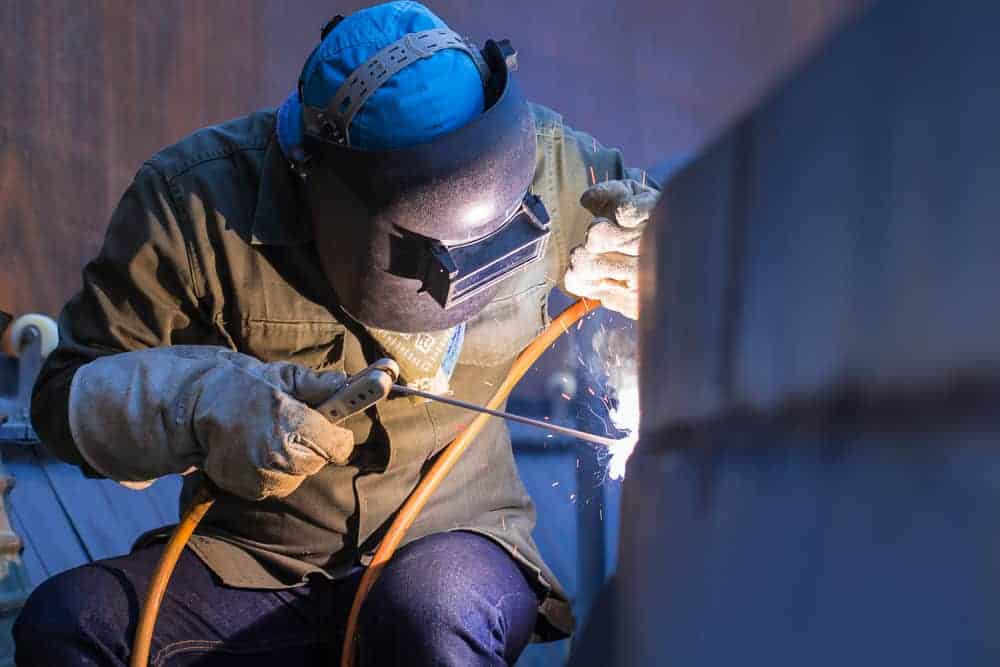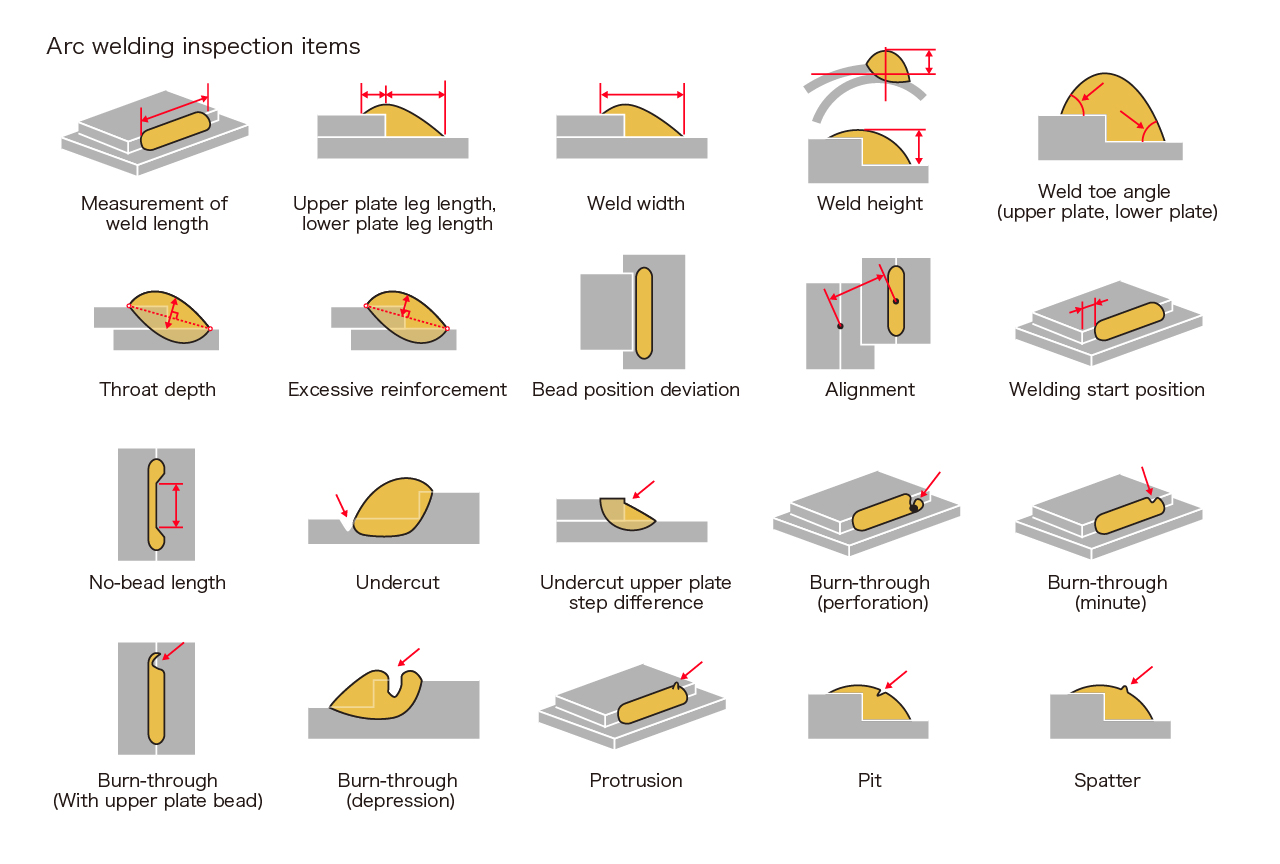Detailed Houston Welding Inspection Providers for Quality Control
Detailed Houston Welding Inspection Providers for Quality Control
Blog Article
A Comprehensive Guide to Understanding Just How Welding Examination Functions: Techniques, Standards, and Ideal Practices for High Quality Guarantee in Steel Fabrication
Understanding the complexities of welding examination is important for maintaining the integrity of metal fabrication. Applying best techniques can substantially enhance quality assurance actions. The landscape of welding examination is not without its challenges.
Value of Welding Inspection
Although welding is a critical procedure in different markets, its stability straight influences the security and efficiency of components and structures. Effective welding examination is vital for determining defects that might jeopardize the quality and resilience of bonded joints. This procedure guarantees adherence to developed criteria and specifications, which are important for preserving structural stability and operational reliability.
Welding assessment offers numerous purposes, including validating that the welding process has been executed appropriately, analyzing the quality of materials utilized, and validating that the ended up product meets governing and industry requirements (Houston Welding Inspection). With rigorous examination, prospective problems such as porosity, cracks, and incomplete combination can be spotted early, mitigating and preventing pricey repairs safety dangers
Moreover, constant welding evaluations foster self-confidence amongst stakeholders, including designers, customers, and regulatory bodies, by demonstrating a dedication to quality control. The value of welding evaluation can not be overemphasized; it is integral not only for compliance with lawful requirements yet likewise for boosting the total performance of bonded frameworks. Inevitably, a durable welding inspection program is an aggressive action that safeguards versus failures, making sure the longevity and dependability of bonded parts in their desired applications.
Common Welding Examination Methods

Visual assessment is the initial line of defense, allowing examiners to identify surface issues such as fractures, undercuts, or insufficient combination. Radiographic screening utilizes X-rays or gamma rays to expose inner problems, making it perfect for complicated welds. Ultrasonic testing utilizes high-frequency acoustic waves to identify subsurface issues, offering exact dimensions of weld honesty.
Magnetic particle testing works for ferromagnetic products, highlighting surface and near-surface suspensions when fragments are used to an electromagnetic field. Conversely, dye penetrant testing utilizes a liquid color to disclose surface-breaking defects, making certain that also the tiniest problems are spotted.
Each technique has its restrictions and toughness, commonly necessitating a combination of techniques for thorough assessment - Houston Welding Inspection. By applying these evaluation techniques, top quality guarantee in steel construction is achieved, guaranteeing that welded frameworks meet safety and security and efficiency criteria
Industry Specifications for Welding


The American Welding Culture (AWS) and the American National Requirement Institute (ANSI) are two famous organizations that develop welding requirements. AWS D1.1, for instance, outlines the demands for welding steel structures, while AWS D1.2 focuses on aluminum. Worldwide, the ISO 3834 basic addresses high quality demands for blend welding, offering a framework relevant throughout national boundaries.

Best Practices for Quality Guarantee
Quality control in welding is vital to attaining resilient and safe buildings. Applying best methods makes certain that every weld fulfills the needed standards and specs. First, establishing a comprehensive quality management system (QMS) tailored to the particular welding job is important. This QMS should define functions, obligations, and procedures to minimize dangers and improve liability.
Routine training and accreditation of welding personnel are crucial for maintaining an experienced labor force. Constant education on the latest welding techniques and innovations makes certain that inspectors and welders are knowledgeable regarding current requirements and methods.
Furthermore, performing pre-weld evaluations to evaluate materials and tools can prevent flaws prior to they take place. Houston Welding Inspection. During the welding process, real-time tracking and paperwork of welding criteria help identify variances immediately. Post-weld evaluations must entail thorough exams using non-destructive testing (NDT) methods to guarantee the stability of the welds
Additionally, preserving clear interaction amongst employee advertises a culture of high quality. Regular audits and reviews of the welding process help identify locations for renovation. By sticking to these ideal techniques, organizations can accomplish ideal quality control, inevitably leading to boosted safety and performance in metal manufacture jobs.
Obstacles in Welding Evaluation
Although welding evaluation is critical for making sure architectural honesty, it provides a selection of difficulties that can make complex the analysis process. One substantial obstacle is the irregularity in welding methods and materials used, which can influence the consistency of weld quality. Various welders might use differing approaches, resulting in inconsistencies that inspectors requirement to assess and recognize.
One more challenge involves the discovery of flaws. Non-destructive screening (NDT) approaches, such as ultrasonic and radiographic screening, can be intricate and call for competent service technicians to analyze outcomes precisely. Incorrect positives or downsides can take place, possibly causing expensive rework or jeopardized security.
Furthermore, the existence of environmental variables, such as temperature level and humidity, can influence the honesty of welds and the performance of assessment methods. Examiners should also navigate the governing landscape, ensuring conformity with industry requirements, which can vary by jurisdiction and application.
Verdict
In verdict, welding examination plays a crucial duty in making sure the honesty and safety of steel fabrication. Using a range of examination methods, sticking to well established sector standards, and applying effective quality look here monitoring techniques jointly enhance the integrity of welded frameworks. Despite the challenges faced in the examination procedure, a dedication to continual renovation and adherence to ideal techniques can considerably strengthen the top quality assurance framework, cultivating higher confidence amongst stakeholders in the welding sector.
Reliable welding assessment is crucial for identifying problems that could endanger the top quality and sturdiness of welded joints.Moreover, regular welding examinations foster self-confidence amongst stakeholders, consisting of designers, clients, and governing bodies, by showing a dedication to quality assurance.The American Welding Culture (AWS) and the American National Requirement Institute (ANSI) are two popular companies that establish welding standards. Throughout the welding procedure, top article real-time tracking and documentation of welding specifications help recognize disparities right away. In spite of the difficulties encountered in the examination procedure, a dedication to continual improvement and adherence to best practices can considerably bolster the quality guarantee framework, promoting greater confidence amongst stakeholders in the welding sector.
Report this page